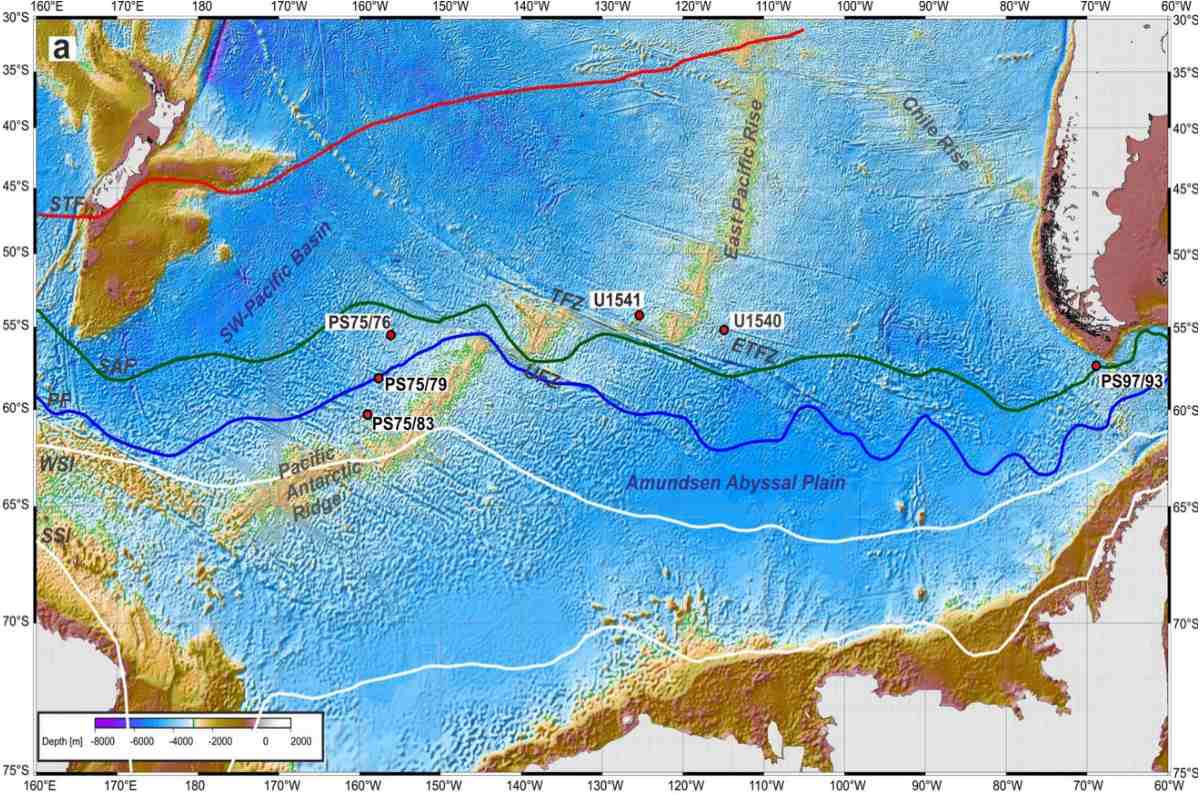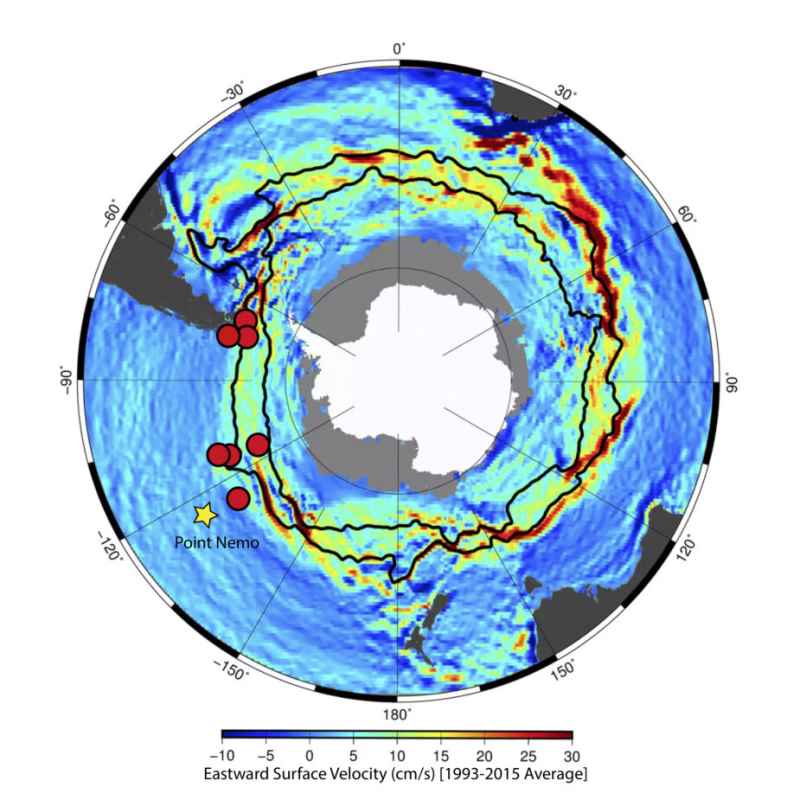The Antarctic Circumpolar Current has accelerated in recent decades, but scientists believe it may be linked to global warming and may offset or amplify some of the effects of warming.

@Nature
The Antarctic Circumpolar Current (ACC), capable of carrying more than a hundred times the volume of water than all of the Earth’s rivers combined, plays a crucial role in the stability of Antarctic ice and regulates the exchange of heat and CO2 between the oceans and the atmosphere.
As temperatures rise, the ACC’s speed might also increase, according to a study published in Nature. This increase poses risks to Antarctic ice, potentially accelerating its melt and contributing to sea-level rise.
The study
An international research team has delved into sediment samples from the most turbulent and remote waters on the planet to trace the ACC’s relationship with climate over the last 5.3 million years.
Their key finding is that, during natural climate oscillations, the current has moved in step with Earth’s temperature, slowing during colder periods and speeding up during warmer ones. Such accelerations have facilitated significant Antarctic ice losses, suggesting that the current’s ongoing acceleration will continue as global warming progresses, potentially hastening Antarctic ice wastage, sea-level rise, and possibly affecting the ocean’s carbon absorption capacity.
Gisela Winckler, the study’s co-author, emphasized the ACC’s power and speed, highlighting its critical role in the Earth’s climate system.
The study suggests that the retreat or collapse of Antarctic ice is mechanically linked to increased ACC flow, a scenario currently observed with global warming.

@Nature
Historical context
The ACC’s conditions were established roughly 34 million years ago after tectonic forces separated Antarctica from other continental masses to the north, and ice caps began to accumulate. It is believed that the current started flowing in its modern form between 12 to 14 million years ago.
Over the last 40 years, scientists have noted a roughly 40% increase in the strength of the winds over the Southern Ocean. This has not only accelerated the ACC but also energized large-scale eddies within it, moving relatively warm waters from higher latitudes towards Antarctica’s massive floating ice shelves. These shelves act as a barrier for even larger internal glaciers. In parts of Antarctica, especially the western region, these warmer waters are eroding the bottoms of ice shelves – a primary reason for their wastage, rather than air temperature warming.
Frank Lamy, the study’s lead author from the Alfred Wegener Institute in Germany, explains that this ice loss can be attributed to the increased southward heat transport. A stronger ACC means that warmer, deeper waters reach the edge of Antarctica’s ice shelves.
Carbon absorption and future implications
The ocean waters surrounding Antarctica currently absorb about 40% of the carbon humans emit into the atmosphere. The acceleration of the ACC could potentially compromise this, raising concerns among scientists about future impacts on carbon absorption.
In conclusion, the researchers highlight geological evidence confirming that human-induced CO2 emissions are warming ocean temperatures and could intensify the Antarctic Circumpolar Current. Given that the oceans absorb up to 90% of the excess heat in the atmosphere trapped by greenhouse gases, this could accelerate Antarctic ice melt, posing a significant risk to global climate stability.
